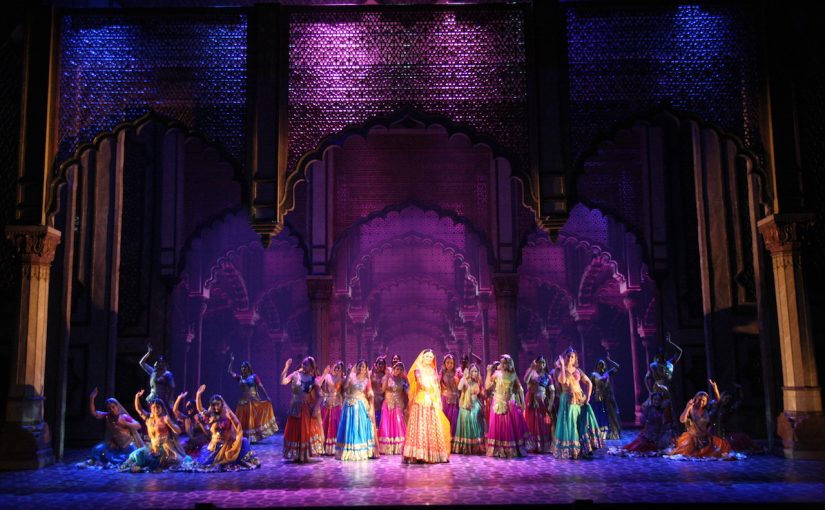Saturday, 22nd October.
I had specially flown to Bombay to spend the day with Urdu poet Janab Iftekhar Imam Siddiqui. I spent the day talking to him, listening to his kalaam and clicking a few photographs. Meeting his brothers Janab Noaman Siddiqui & Janab Hamid Iqbal Siddiqui, poet, and academician at Dinath building, in the office of Shair, the oldest, still in print Urdu literary magazine.
I was happy with the day’s work and was on my way back to Powai when I got a call from Gaurav Vaz asking if I was in Mumbai on Sunday. He told me that he was in Mumbai to watch the play Mughal-e-Azam being performed as a dance drama. He suggested I go and watch it as well. I jumped at the opportunity and he graciously arranged for the passes. Thank you so much, Gaurav.

Sunday, 23rd October, Jamshed Bhabha Theatre, NCPA
While Mughal-e-Azam was originally written as a play, it was made into an epic historical film by K Asif. I grew up loving this epic movie. Even today, I watch it at least once a year – it is that kind of a movie. I know each of the scenes, each dialogue by heart. So while I was excited that it is being performed on stage and directed by none other than Feroz Abbas Khan Saheb, but I had my reservations. Staging a play based on an epic movie raises huge expectations. The standards were set too high by the movie.
As I entered the theater and took my seat, I noticed Mr. M S Sathyu sitting right next to me. I felt nervous.
The play began with a message from Lata Mangeshkar, She spoke about the movie. As the play started, I heard a collective sigh from the audience. From there on, it was spellbinding.
Every major scene from the movie was there in front of us, being performed live on stage. The grandeur of the movie was replicated with finesse. The movable steps, Mughal era pillars (that were raised and lowered as per the scene demands), the intricate jaali work, screens, front and back CG projections coupled with excellent light design took me to the era of Salim and Anarkali, just as the movie did. In fact, the play in that sense was better than the movie because a movie has the luxury of shooting a scene with selective camera angles and close-ups, which a stage productions does not. It has to be achieved purely by set and light design and performances.
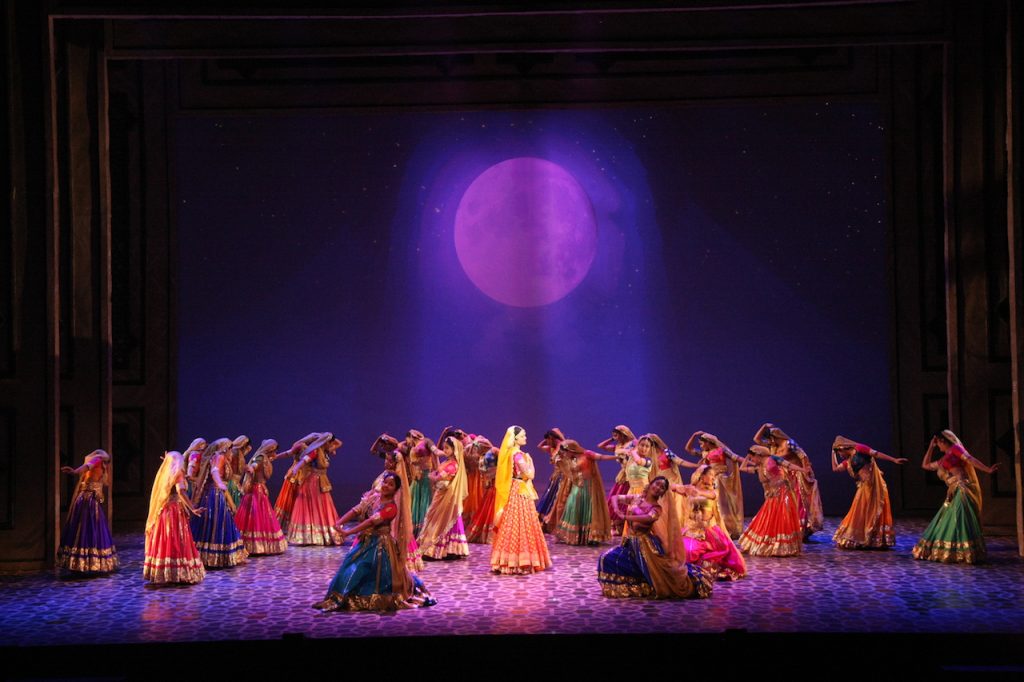
Prithviraj Kapoor, Dilip Kumar and Madhubala in the movie also set the bar very high for acting. The actors, Nissar Khan as Akbar, Priyanka Barve as Anarkali, Sunil Kumar Paliwal as Salim, did a very good job on stage. What stood out was the actors’ perfect Urdu diction, and that pleased me very much.
Songs play a paramount role in the movie, and what set the stage production apart and made it very enticing, was the flawless live singing by the characters. Priyanka Barve as Anarkali sang the difficult songs, originally sung by none other than Lata Mangeshkar, extremely well, and Ashima Mahajan as Bahar was equally good.
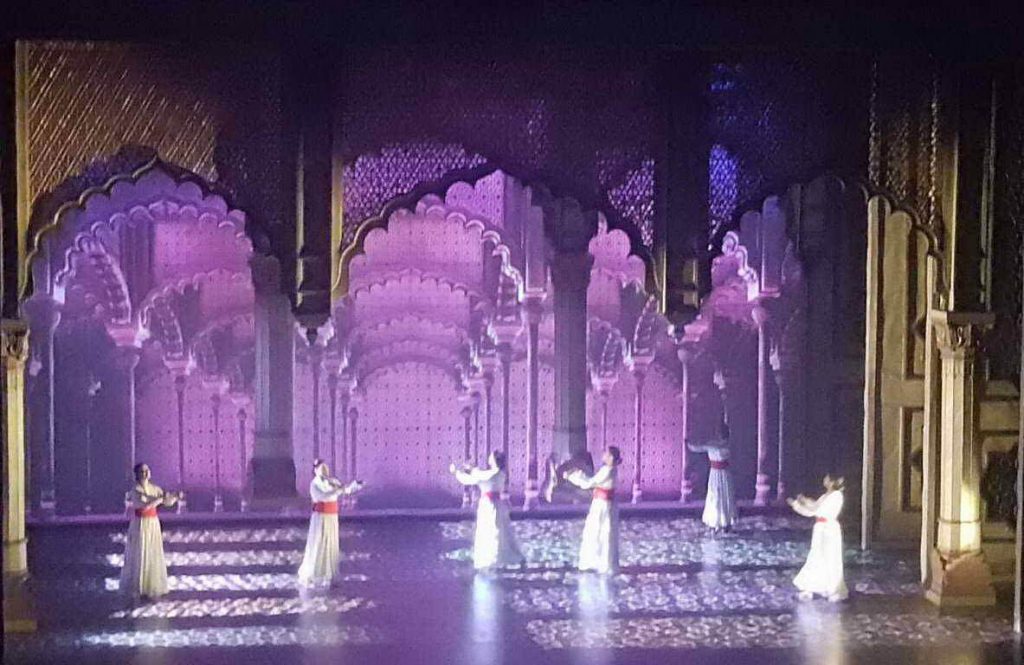
The dances! Ah, the dances were mesmerizing, they breathed life into the scenes. The emotions of Anarkali was reflected in each step, each bhav of the collective troop of very talented dancers. I was told that the very best were auditioned and chosen from various kathak gharanas. Mayuri Upadhya’s choreography makes this production complete and a pure delight to watch being performed.
As I was watching the play, I remember waiting with bated breath for the song “Jab pyar kiya to darna kya” apart from the song and dance being timeless in itself, it was the depiction of sheesh mahal in the movie that had made big news. My expectations were raised as the play progressed, and my heart raced as the scene drew closer.
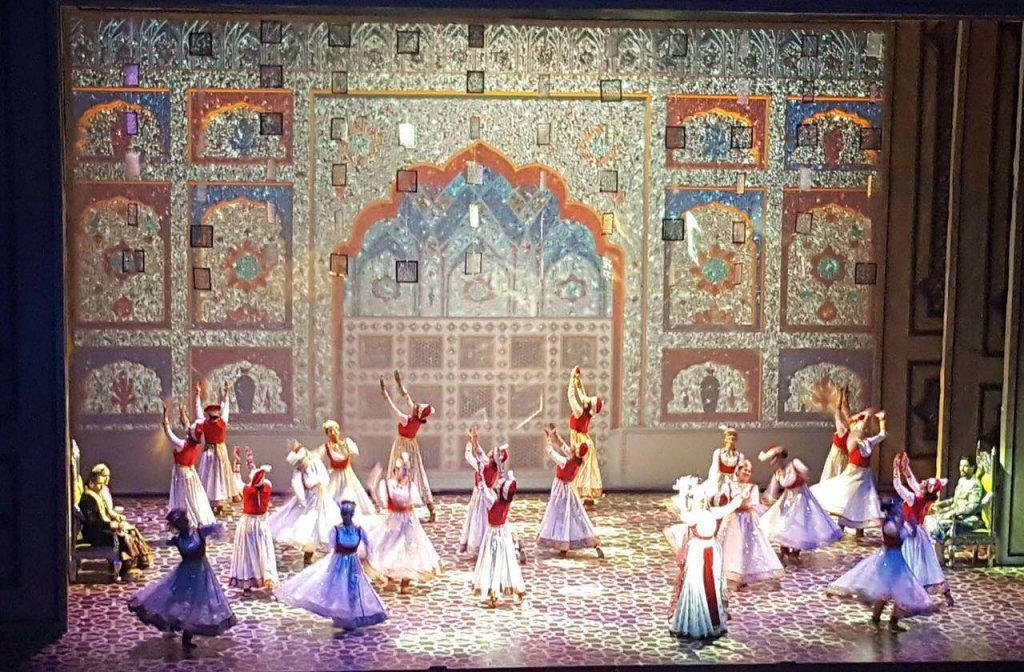
Salim is on one side of the stage, and on the other is Akbar and Jodhabai. Anarkali is in the middle with her troop of dancers. The stage is a replica of Sheesh Mahal as it must have been in the Mughal era. There are huge arches with intricate jali and mirror work, and more mirrors hang from the ceiling reflecting the moves of the dancers dressed in long flowing costumes. Anarkali looking stunning in her gorgeous white and red ensemble singing “pyar kiya koi chori nahi ki, chhup chhup aaheN bharna kya”.
As the song progresses, the dancers gain momentum in graceful rhythmic steps they match the lyrics, and dancers emote every emotion that Anarkali is going through.
Parda nahi jab koi khuda se
BandoN se parda karna kya
At this point I was completely overwhelmed. The sounds of hundreds of ghunghroo, rising to a crescendo, the fast, continuous pirouettes transport me to the era of Salim and Anarkali. It was magical, to say the least.
The other place where choreography wins is a scene where Anarkali gets her last wish of being “Hindustan Ki Malika.” Bahar is singing “Jab raat hai itni matwali to subah ka alam kya hoga” Anarkali gives Salim the drugged rose, and Salim is about to faint. The emotions of both Anarkali and Salim depicted through dance were outstanding.
The meticulous attention to details in each scene, right from the start when the Sangtarash begins to narrate the story till the end when Anarkali pardons Akbar for her murder, is what makes this epic drama as timeless as the movie.
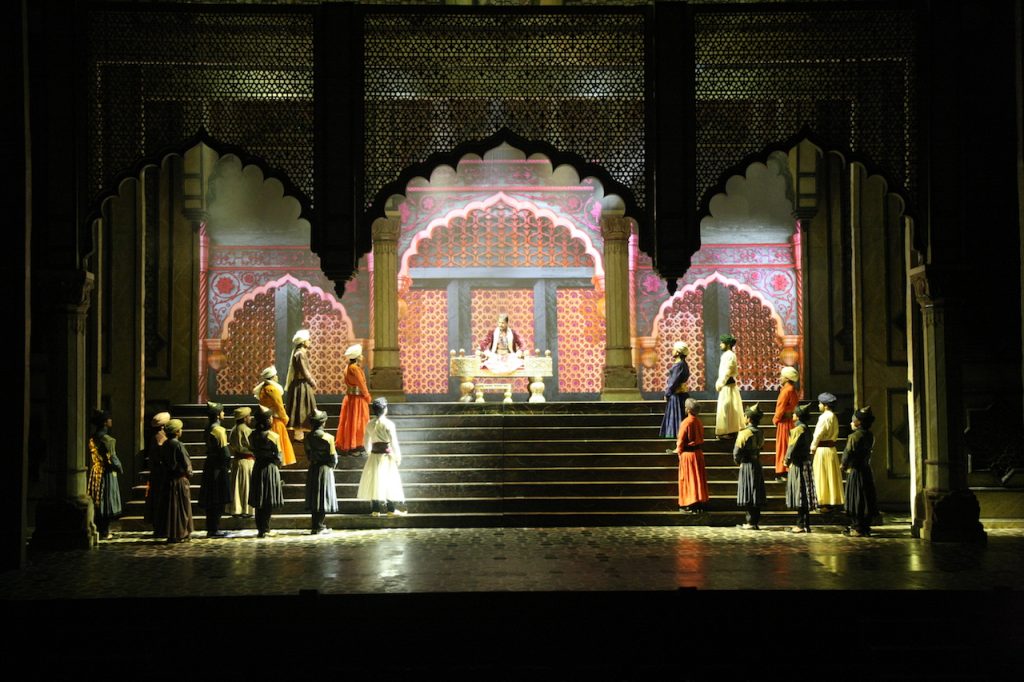
There can not be a better tribute to K Asif, to the playwright Imtiaz Ali Taj and to the movie Mughal-e-Azam than this. Go watch Feroz Abbas Khan’s Mughal-e-Azam on stage; I guarantee you will be richer by the experience. Here is a quick link to take you there: Book My Show
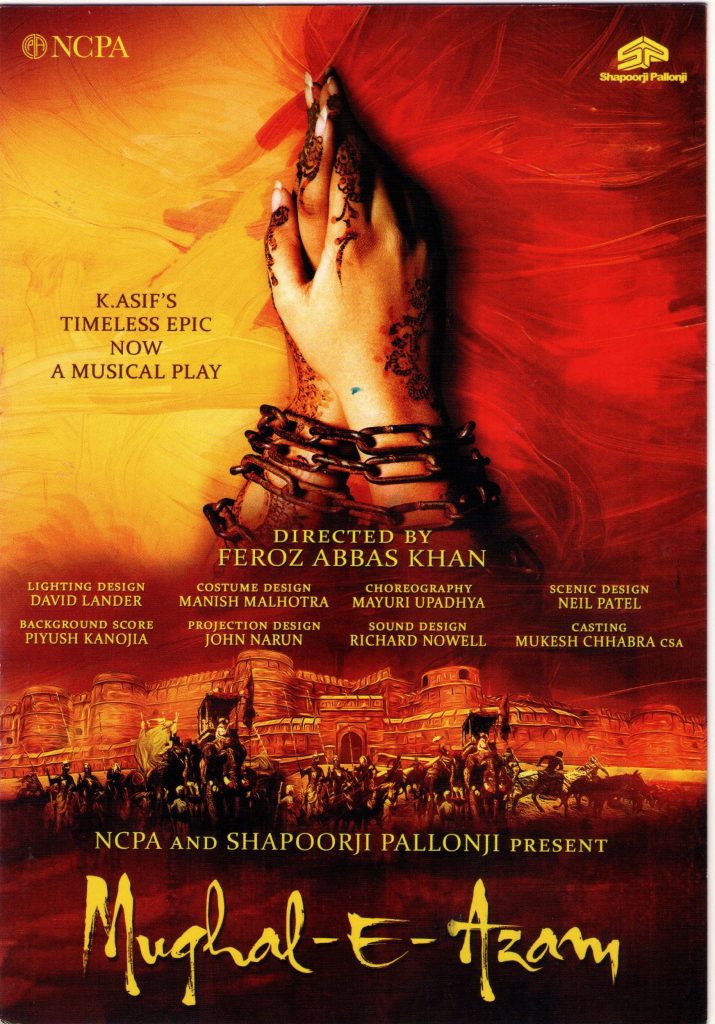
Photos courtesy: Team Mughal-e-Azam.
